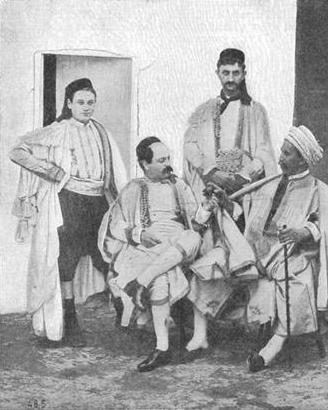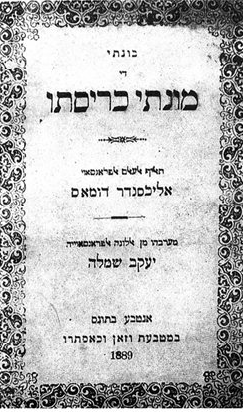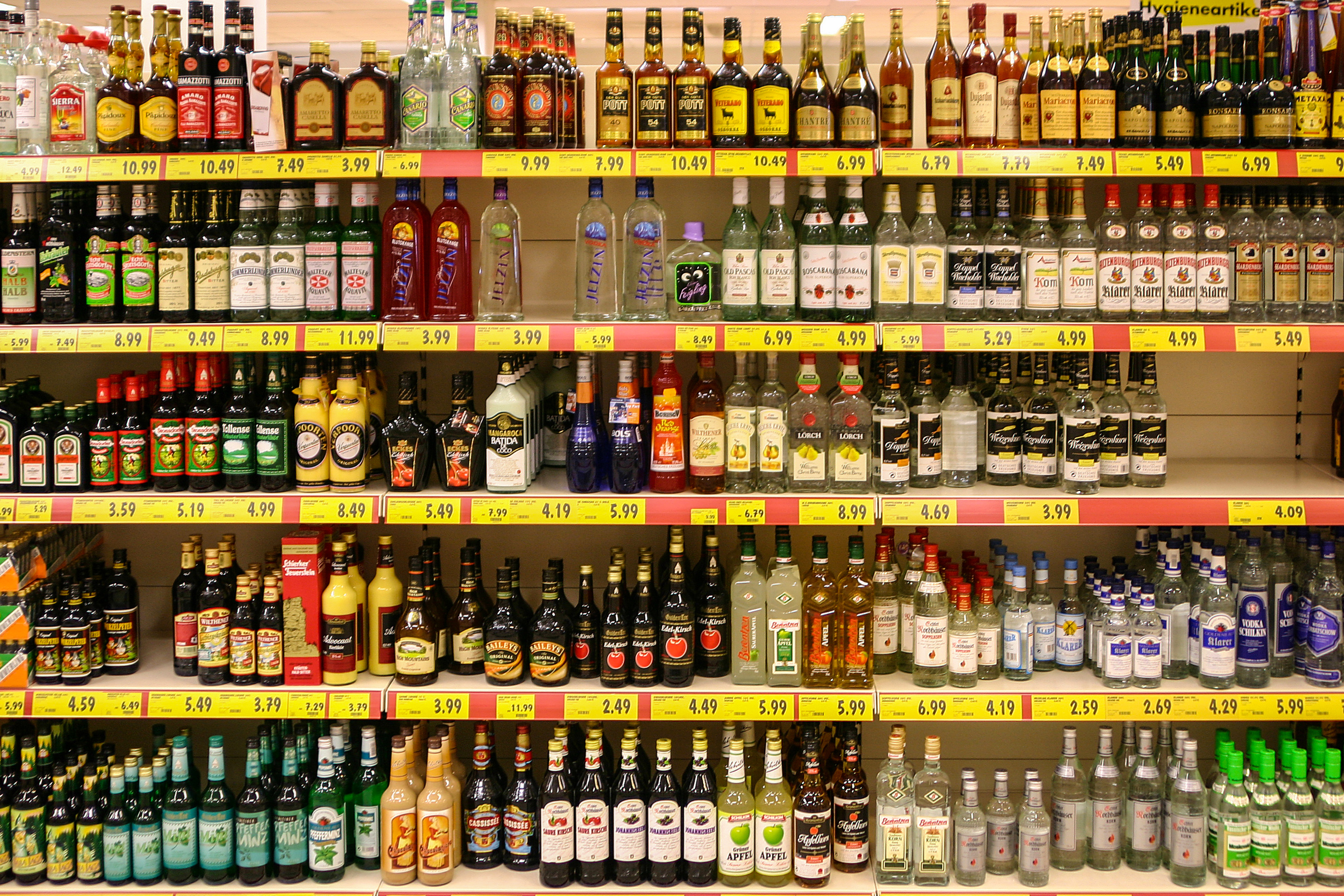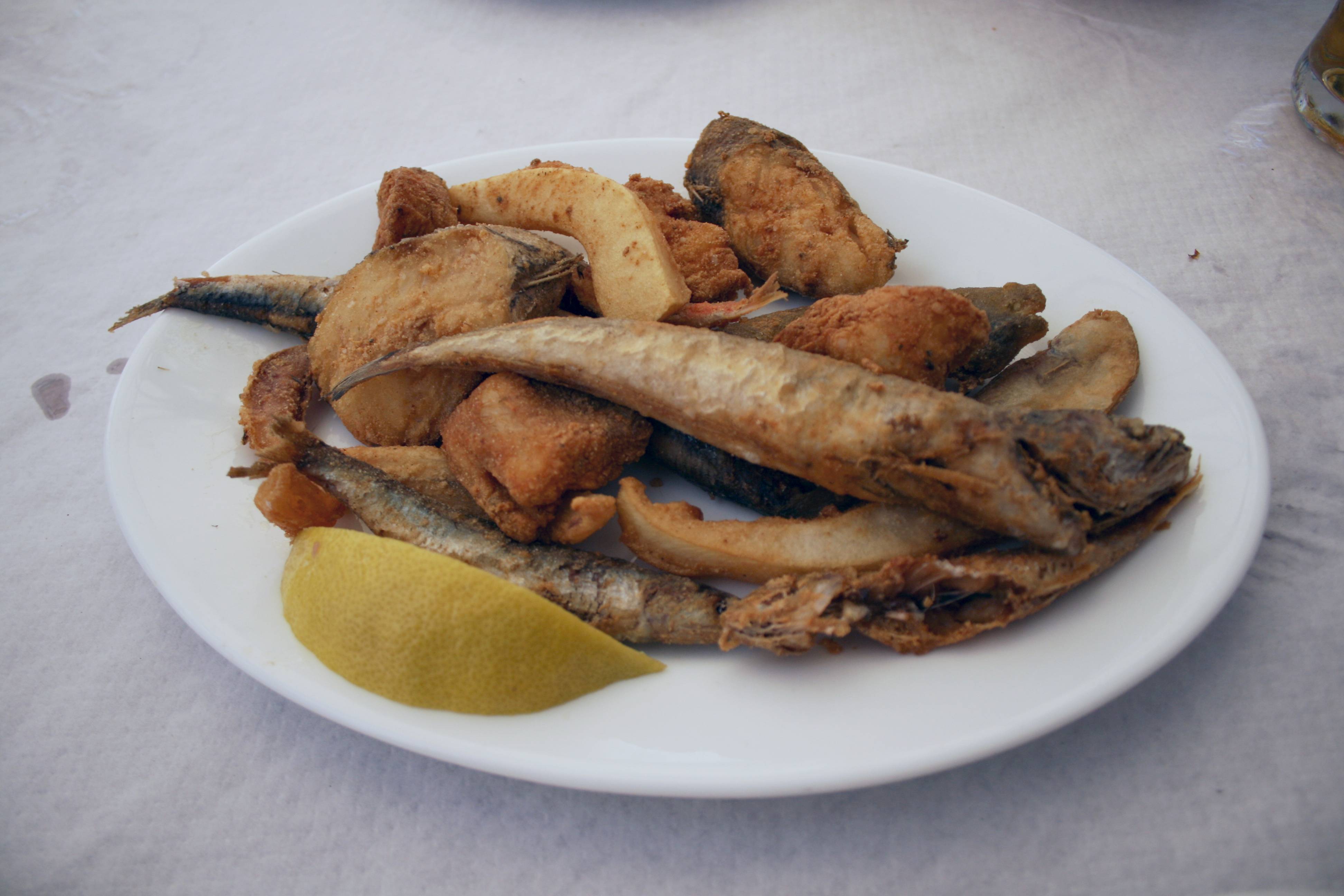|
Boukha
Boukha ( aeb, بوخة) is a distilled beverage produced from figs. It originated in the Tunisian Jewish community, where most of it is still produced. Etymology Its name means 'alcohol vapor' in Judeo-Tunisian Arabic Judeo-Tunisian Arabic, also known as Judeo-Tunisian, is a variety of Tunisian Arabic mainly spoken by Jews living or formerly living in Tunisia. Speakers are older adults, and the younger generation has only a passive knowledge of the language. .... It is obtained by simple distillation of Mediterranean figs. Its alcohol percentage ranges between 36 and 40 percent. Overview Boukha can be consumed straight at room temperature or cold, or serve as the basis for cocktails and for fruit salad. History of boukha in Colonial Tunisia The production of Boukha was closely linked to the Jewish community in Tunisia and was seen as a threat by the French colonial authorities in Tunisia as something that would have a malicious and violent affect on Muslims in the region ... [...More Info...] [...Related Items...] OR: [Wikipedia] [Google] [Baidu] |
Boukha
Boukha ( aeb, بوخة) is a distilled beverage produced from figs. It originated in the Tunisian Jewish community, where most of it is still produced. Etymology Its name means 'alcohol vapor' in Judeo-Tunisian Arabic Judeo-Tunisian Arabic, also known as Judeo-Tunisian, is a variety of Tunisian Arabic mainly spoken by Jews living or formerly living in Tunisia. Speakers are older adults, and the younger generation has only a passive knowledge of the language. .... It is obtained by simple distillation of Mediterranean figs. Its alcohol percentage ranges between 36 and 40 percent. Overview Boukha can be consumed straight at room temperature or cold, or serve as the basis for cocktails and for fruit salad. History of boukha in Colonial Tunisia The production of Boukha was closely linked to the Jewish community in Tunisia and was seen as a threat by the French colonial authorities in Tunisia as something that would have a malicious and violent affect on Muslims in the region ... [...More Info...] [...Related Items...] OR: [Wikipedia] [Google] [Baidu] |
Mahia (drink)
''Mahia'' ( ar, ماء حياة, he, מאחיה, literally ''water of life'') is a Moroccan Jewish alcoholic beverage distilled from dates. It is also sometimes prepared with figs. Overview ''Mahia'' (ماء الحياة) is a traditional Moroccan Jewish brandy distillates from fruits such as jujubes, figs, dates, grapes, and flavored with anise. Its name literally means "eau de vie" in Arabic. Originally from Morocco, it was historically produced by the Moroccan Jews before they emigrated in the second half of the 20th century. ''Mahia'' can be enjoyed as a digestif or used as a base for cocktails: it goes very well with pomegranate juice, rose water; ginger syrup or mango juice for example. It can also be infused with fennel leaves, to enhance its aniseed scent. Today, ''mahia'' very often designates adulterated alcohol in Morocco sold informally and consumed in disadvantaged neighborhoods. Even in present-day Morocco it is still traditionally associated with Morocco's Jewish c ... [...More Info...] [...Related Items...] OR: [Wikipedia] [Google] [Baidu] |
Tunisian Cuisine
Tunisian cuisine, the cuisine of Tunisia, consists of the cooking traditions, ingredients, recipes and techniques developed in Tunisia since antiquity. It is mainly a blend of Mediterranean and native Punics-Berber cuisine. Historically, Tunisian cuisine witnessed influence and exchanges with many cultures and nations like Italians, Andalusians, French and Arabs. Like many countries in the Mediterranean basin, the Tunisian cuisine is heavily based on olive oil, spices, tomatoes, seafood and meat. Yet, it has a distinctive spiciness that differs it from surrounding cuisines. Origins Tunisian cuisine developed from Berbers, ancient Carthage, Rome, the Islamic conquest of the Maghreb, and the Ottoman Empire. The cuisine has been strongly influenced by French and Italian (especially Sicilian) cooking. During its era of French colonial rule Tunisia marketed its difference to metropolitan France meaning it played on French perceptions of "difference" (Orientalism) to sell the p ... [...More Info...] [...Related Items...] OR: [Wikipedia] [Google] [Baidu] |
Distilled Beverage
Liquor (or a spirit) is an alcoholic drink produced by distillation of grains, fruits, vegetables, or sugar, that have already gone through alcoholic fermentation. Other terms for liquor include: spirit drink, distilled beverage or hard liquor. The distillation process concentrates the liquid to increase its alcohol by volume. As liquors contain significantly more alcohol (drug), alcohol (ethanol) than other alcoholic drinks, they are considered 'harder'; in North America, the term ''hard liquor'' is sometimes used to distinguish distilled alcoholic drinks from non-distilled ones, whereas the term ''spirits'' is more common in the UK. Some examples of liquors include vodka, rum, gin, and tequila. Liquors are often aged in barrels, such as for the production of brandy and whiskey, or are infused with flavorings to form a flavored liquor such as absinthe. While the word ''liquor'' ordinarily refers to distilled alcoholic spirits rather than beverages produced by fermentation ... [...More Info...] [...Related Items...] OR: [Wikipedia] [Google] [Baidu] |
Common Fig
The fig is the edible fruit of ''Ficus carica'', a species of small tree in the flowering plant family Moraceae. Native to the Mediterranean and western Asia, it has been cultivated since ancient times and is now widely grown throughout the world, both for its fruit and as an ornamental plant.''The Fig: its History, Culture, and Curing'', Gustavus A. Eisen, Washington, Govt. print. off., 1901 ''Ficus carica'' is the type species of the genus ''Ficus'', containing over 800 tropical and subtropical plant species. A fig plant is a small deciduous tree or large shrub growing up to tall, with smooth white bark. Its large leaves have three to five deep lobes. Its fruit (referred to as syconium, a type of multiple fruit) is tear-shaped, long, with a green skin that may ripen toward purple or brown, and sweet soft reddish flesh containing numerous crunchy seeds. The milky sap of the green parts is an irritant to human skin. In the Northern Hemisphere, fresh figs are in season from l ... [...More Info...] [...Related Items...] OR: [Wikipedia] [Google] [Baidu] |
Tunisian Jews
The history of the Jews in Tunisia extended nearly two thousand years and goes back to the Punic era. The Jewish community in Tunisia is no doubt older and grew up following successive waves of immigration and proselytism before its development was hampered by anti-Jewish measures in the Byzantine Empire. The community formerly used its own dialect of Arabic. After the Muslim conquest of Tunisia, Tunisian Judaism went through periods of relative freedom or even cultural apogee to times of more marked discrimination. The arrival of Jews expelled from the Iberian peninsula, often through Livorno, greatly altered the country. Its economic, social and cultural situation has improved markedly with the advent of the French protectorate before being compromised during the Second World War, with the occupation of the country by the Axis. The creation of Israel in 1948 provoked a widespread anti-Zionist reaction in the Arab world, to which was added nationalist agitation, nationali ... [...More Info...] [...Related Items...] OR: [Wikipedia] [Google] [Baidu] |
Judeo-Tunisian Arabic
Judeo-Tunisian Arabic, also known as Judeo-Tunisian, is a variety of Tunisian Arabic mainly spoken by Jews living or formerly living in Tunisia. Speakers are older adults, and the younger generation has only a passive knowledge of the language. The vast majority of Tunisian Jews have relocated to Israel and have shifted to Hebrew as their home language.Bassiouney, R. (2009). ''Arabic sociolinguistics''. Edinburgh University Press, pp. 104. Those in France typically use French as their primary language, while the few still left in Tunisia tend to use either French or Tunisian Arabic in their everyday lives. Judeo-Tunisian Arabic is one of the Judeo-Arabic languages, a collection of Arabic dialects spoken by Jews living or formerly living in the Arab world. History Before 1901 A Jewish community existed in what is today Tunisia even prior to Roman rule in Africa. After the Arabic conquest of North Africa, this community began to use Arabic for their daily communication. They ... [...More Info...] [...Related Items...] OR: [Wikipedia] [Google] [Baidu] |
Distilled Drinks
Liquor (or a spirit) is an alcoholic drink produced by distillation of grains, fruits, vegetables, or sugar, that have already gone through alcoholic fermentation. Other terms for liquor include: spirit drink, distilled beverage or hard liquor. The distillation process concentrates the liquid to increase its alcohol by volume. As liquors contain significantly more alcohol (ethanol) than other alcoholic drinks, they are considered 'harder'; in North America, the term ''hard liquor'' is sometimes used to distinguish distilled alcoholic drinks from non-distilled ones, whereas the term ''spirits'' is more common in the UK. Some examples of liquors include vodka, rum, gin, and tequila. Liquors are often aged in barrels, such as for the production of brandy and whiskey, or are infused with flavorings to form a flavored liquor such as absinthe. While the word ''liquor'' ordinarily refers to distilled alcoholic spirits rather than beverages produced by fermentation alone, i ... [...More Info...] [...Related Items...] OR: [Wikipedia] [Google] [Baidu] |
Sephardi Jewish Cuisine
Sephardic Jewish cuisine is an assortment of cooking traditions that developed among the Sephardi Jews. Those of this Iberian origin who were dispersed in the Sephardic Diaspora ultimately became the Eastern Sephardim and North African Sephardim as they settled throughout the Mediterranean in Turkey, Greece, the Balkans, and the Arab countries of West Asia and North Africa. Cuisine of the Sephardi Jews also includes the cuisine of those who became the Western Sephardim who settled in Holland, England, and from these places elsewhere. Mizrahi Jews, being the pre-existing Jews of the Greater Middle East (of non-Spanish and non-Portuguese origin), are sometimes called Sephardim in a broader sense due to their style of liturgy. Although there is some overlap in populations due to the Sephardic Diaspora, Sephardic Jews also settled in many other countries outside the Greater Middle East as well. As such, this article deals only with the cuisine of the Jewish populations with an ... [...More Info...] [...Related Items...] OR: [Wikipedia] [Google] [Baidu] |
Jews And Judaism In Tunisia
Jews ( he, יְהוּדִים, , ) or Jewish people are an ethnoreligious group and nation originating from the Israelites Israelite origins and kingdom: "The first act in the long drama of Jewish history is the age of the Israelites""The people of the Kingdom of Israel and the ethnic and religious group known as the Jewish people that descended from them have been subjected to a number of forced migrations in their history" and Hebrews of historical Israel and Judah. Jewish ethnicity, nationhood, and religion are strongly interrelated, "Historically, the religious and ethnic dimensions of Jewish identity have been closely interwoven. In fact, so closely bound are they, that the traditional Jewish lexicon hardly distinguishes between the two concepts. Jewish religious practice, by definition, was observed exclusively by the Jewish people, and notions of Jewish peoplehood, nation, and community were suffused with faith in the Jewish God, the practice of Jewish (religious) la ... [...More Info...] [...Related Items...] OR: [Wikipedia] [Google] [Baidu] |
Israeli Cuisine
Israeli cuisine ( he, המטבח הישראלי ) comprises both local dishes and dishes brought to Israel by Jews from the Diaspora. Since before the establishment of the Israel, State of Israel in 1948, and particularly since the late 1970s, an Israeli Jewish fusion cuisine has developed.Gold, Rozann''A Region's Tastes Commingle in Israel'' (July 20, 1994) in ''The New York Times'' Retrieved 2010–02–14 Israeli cuisine has adopted, and continues to adapt, elements of various styles of Arab cuisine and diaspora Jewish cuisine, particularly the Cuisine of the Mizrahi Jews, Mizrahi, Cuisine of the Sephardic Jews, Sephardic and Ashkenazi_Jewish_cuisine, Ashkenazi styles of cooking. It incorporates many foods traditionally included in other Middle Eastern cuisine, Middle Eastern and Mediterranean cuisines, so that spices like ''za'atar'' and foods such as ''falafel'', ''hummus'', ''msabbha'', ''shakshouka'' and ''couscous'' are now widely popular in Israel.Gur, ''The Book of New ... [...More Info...] [...Related Items...] OR: [Wikipedia] [Google] [Baidu] |






